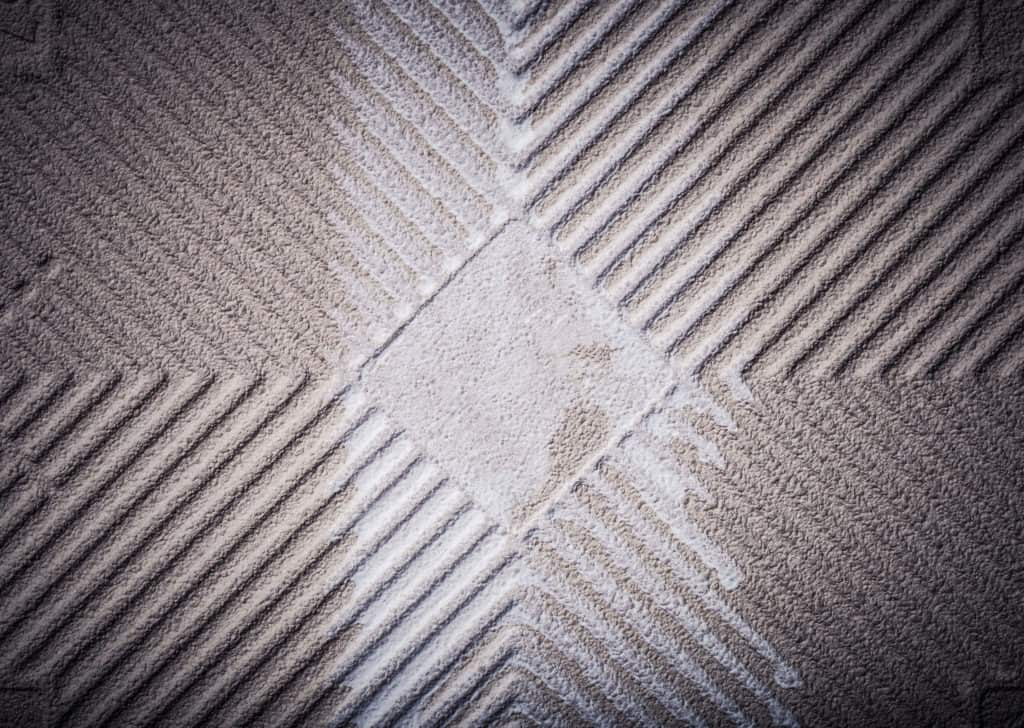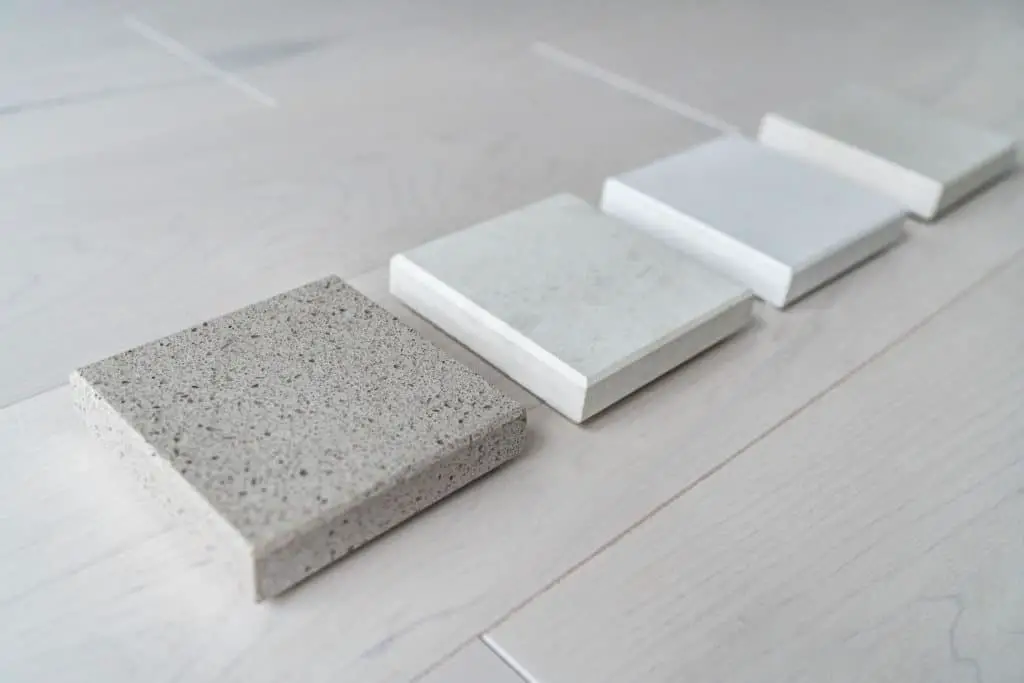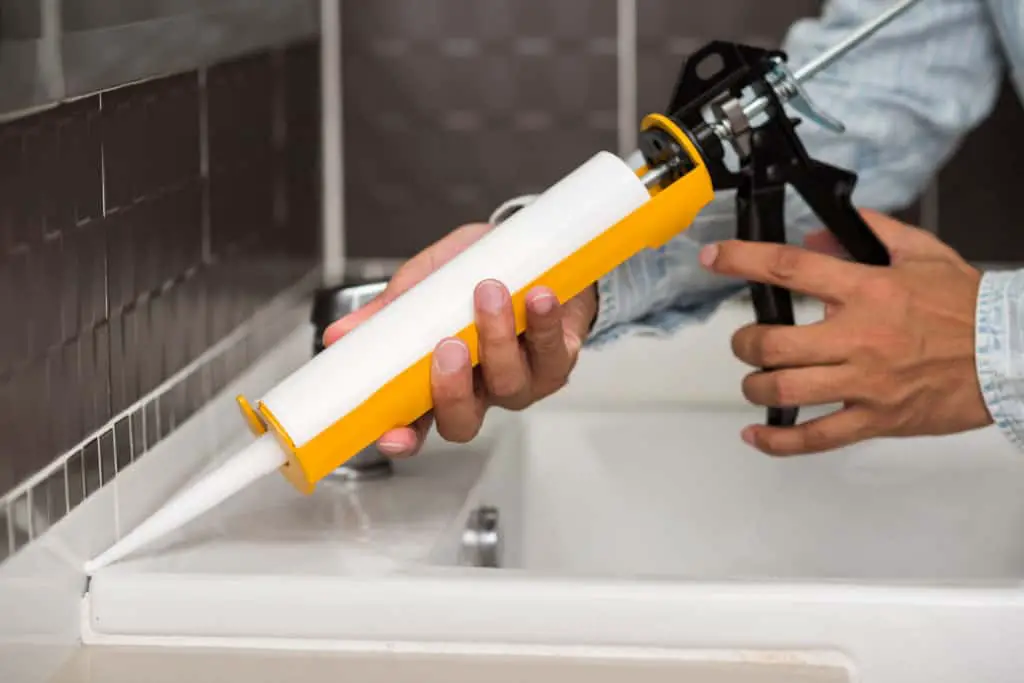
Maybe you’ve just laid down some tile without planning ahead for edge trim, or maybe you’re dealing with the results of someone else’s DIY tile job. If you are, then you will have likely noticed one thing: Exposed tile edges are ugly. Even if the tiles themselves are beautiful, those blank, exposed tile edges make the whole job unfinished and can even be sharp and dangerous. Not only is the look and utility bad, but there is also the possibility of the tiles being more prone to damage. Is simply painting over these edges a smart solution?
You can paint tile edges. The unglazed edges of ceramic tiles will absorb liquid, causing them to crack over time, and a layer of paint will help seal and protect them. Acrylic latex or epoxy paint should be used, and the tile edges should be sealed with a primer before painting.
Not everyone has the time or budget to tear up a tile job and start from square one. Knowing how to approach your exposed tile edges will help you keep your tiles in good condition and make them look finished and beautiful for years.
Types of Tiles: When is Painting necessary?
Ceramic and porcelain tiles are usually the culprits when it comes to exposed tile edge problems. Made of natural clay that has been fired and glazed, ceramic tiles are versatile, cheap, and can be stunning when used well. The glazed surface of these tiles repel water beautifully, but the unglazed clay backs and edges are another story.

Typically these edges and backs would be cozily covered and sealed with grout and adhesive, but exposed tile edges don’t get equal treatment. Tile edges in showers, bathrooms, and kitchens will potentially face a lot of humidity and water exposure and will absorb it. This will cause the tiles to crack, which not only looks bad but may cause the adhesive behind the tile job to weaken and become loose or become a hotbed for mold and mildew.
Ceramic tiles aren’t the only players when it comes to tile water absorption though. Most kinds of tile absorb at least a little water if left unsealed, even natural stone. Granite, marble, limestone, and travertine tiles all require a sealant to prevent damage over long periods of time. No matter what type of tiles you have, a good rule of thumb is that if the tile material is porous, it will not be completely waterproof, merely water-resistant. The more dense the material, the more water-resistant it will be.
While painting the edges of tiles will help them look finished, the sealing and priming of the tile edges are what will help prevent damage the most. Sealing and priming these edges will help the paint stick and be more durable.

Do I Really Need To Use Tile Paint?
Tile paint is specifically designed for tile. It dries hard and is extremely durable, and these paints stick to glossy ceramic, porcelain, and glass surfaces of the tile well. Your tile edges aren’t glazed, however, and tile paint can be quite expensive. Is shelling out for tile paint really worth it, especially if you just want to take care of some edges?
The short answer is no. As long as you prime and protect your edges, it doesn’t really matter what kind of paint you use to finish up. Priming will help the paint stick, prevent chipping and peeling, and last longer no matter what kind of paint is used.
The main issue with using cheaper paints is that it takes multiple coats to get a flat finish. If your tile edges are dark and you’re planning on using light-colored paint, then you will need to go over them multiple times to get complete coverage. On the other hand, if this isn’t a problem for you, then cheap paint is paint. It’s passable and can be worked with.
Another thing to consider is that If the tile is in a humid area of the house or will be exposed to moisture often, is to use oil-based paint. Oil-based paints dry hard and durably and are very water-resistant. If the tiles you are painting are not in humid conditions, then water-based paint will work fine. Many modern water-based paints also dry hard and are more water-resistant than older formulas, so a little moisture on these won’t hurt them.
Other ways to finish tile edges (without tearing everything up)

Let’s address the elephant in the room: one problem with painting tile edges is that while the result is serviceable, it will probably look like a DIYer did it and isn’t the most professional look. When finishing tile jobs, professional tilers recommend using special edge tiles, metal capping, or bullnose style trim to make projects look finished while. However, these trim options cannot be added to the tiles afterward.
Unfortunately, there isn’t really an easy way to perfectly finish tile edges without tearing everything up, but it isn’t realistic for everyone to have the time or budget to tear tiles up and start over. If you want to take care of your tiles without breaking the bank, here are some different ways to do that.
Grouting
Carefully grouting the edges of your tile job is possible, but hard to pull off. It requires a lot of skill and coordination, and it’s easy to make mistakes. The benefit of grouting your edges is that chipped grout is much easier to fix than chipped tile, and grouting is a cheap way to protect your tiles. If you choose to finish your edges with grout, do so in a low-traffic area to protect it for as long as possible.
Caulk
Finishing your tile edges with caulk is like the better version of finishing with grout. Caulk is much softer and more flexible than grout, and will therefore hold up better under wear and tear. Caulking also has the added benefit of being waterproof, which is preferred for areas with high water exposure like bathrooms or kitchen backsplashes. Caulking offers a smooth transition and seals edges without being too expensive.
Rail Moldings
Rail moldings aren’t perfect for all situations: They can be added to the edge where tile lifts off of the wall, but not on 90-degree corners where exposed tiles overlap and meet. Rail moldings are typically made of stone or plywood, and depending on the utility and look you’re going for, can be a good solution to save your tile edges.
